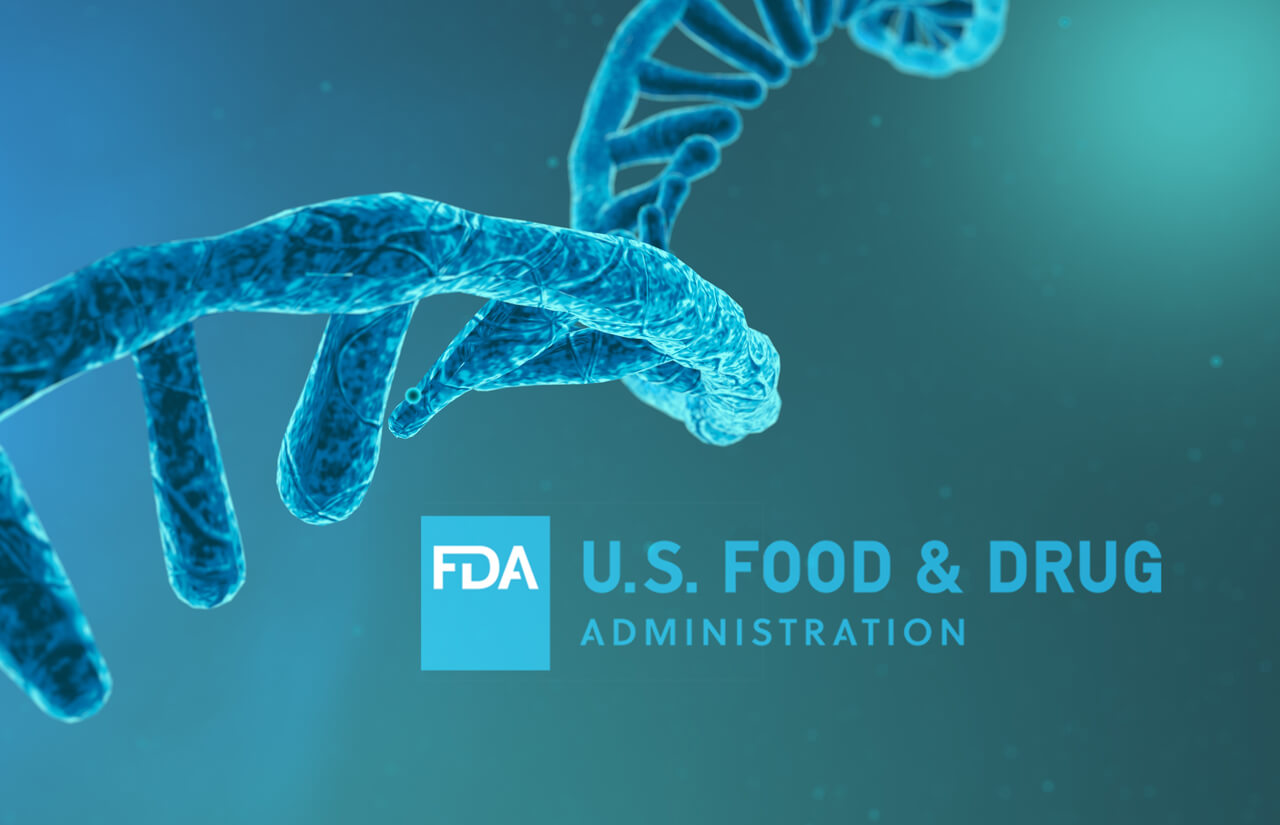Looking for something?
FDA Draft Guidance – An Exciting Step in the Journey to Bring Oligonucleotide Therapeutics to Patients

In recent years, antisense and small interfering RNA (siRNA) oligonucleotide therapeutics have been FDA-approved to treat rare diseases, and many oligonucleotide therapeutics aimed at treating common chronic diseases are in the pipeline.
As oligonucleotide therapeutics continue to develop as an emerging and promising treatment for rare diseases, the US Food and Drug Administration (FDA) has released a draft guidance for their development.
Although the mission of the FDA is to protect public health by ensuring drugs are safe and effective before approval, it can often lead to regulatory roadblocks in drug development. However, these guidelines are a step in the right direction in making oligonucleotide treatments available for patients with rare and life-threatening diseases and will help academic investigators carry out this critical work.
The June 24 document, titled Clinical Pharmacology Considerations for the Development of Oligonucleotide Therapeutics (1), outlines the FDA’s expectations and recommendations in the development of oligonucleotide drugs, including characterizing the potential for QTc interval prolongation, performing immunogenicity risk assessment, characterizing the impact of hepatic and renal impairment and assessing the potential for drug-drug interactions.
Oligonucleotides include a variety of synthetically modified RNA or RNA/DNA hybrids, which typically alter the target RNA and/or protein expression. As a therapeutic modality, oligonucleotides can have a range of differences, including mechanism of action, structure, size, sequence, and delivery strategy.
Currently, the recommendations in this first draft only apply to oligonucleotide therapeutics that use an RNA-centric mechanism of action. However, it is subject to expansion and revisions as information in the field increases. Here is a brief overview of some of the key points in the document.
Clinical Pharmacology Considerations
Although oligonucleotide therapeutics are typically cleared rapidly from systemic circulation, they have longer tissue and pharmacodynamic half-lives. As a result, the FDA encourages sponsors to consider certain studies to better understand the pharmacological effects of the products.
The guidelines state that, in general, sponsors should characterize the plasma pharmacokinetics — how the drug moves throughout the body — following single and multiple doses early in the oligonucleotide drug development.
However, for certain oligonucleotides, the pharmacokinetics might not reflect the target tissue distribution, pharmacodynamics, safety, or efficacy. With that in mind, sponsors should include an assessment of appropriate pharmacodynamic biomarkers like target mRNA, target protein, or a downstream biomarker reflecting the modulation of the target protein.
“Such assessments are important in situations where pharmacodynamic changes are independent of plasma pharmacokinetic changes,” the agency states. “The selection of the pharmacodynamic endpoints should be discussed with the appropriate FDA review staff, especially in cases where the pharmacodynamic endpoints might not directly reflect target knockdown (e.g., cerebrospinal fluid for central nervous system targets).”
Characterizing QTc Interval Prolongation and Proarrhythmic Potential
Although current data suggests that oligonucleotide therapeutics do not typically affect cardiac activity, including the QTc interval, the guidance states that because the drugs are diverse, the available information does not sufficiently support an overall conclusion on how specific types of oligonucleotides affect the proarrhythmic potential.
As a result, the agency recommends all oligonucleotide therapeutic development programs submit an assessment of QT prolongation risk and a proposed QT assessment plan that is discussed with the FDA.
Performing Immunogenicity Risk Assessments
As oligonucleotide treatments rapidly evolve, the FDA notes that new chemistries and modifications can significantly affect the immune response to a particular product.
“An unwanted immune response to an oligonucleotide therapeutic can be generated to the carrier, backbone, oligonucleotide sequence, or any novel epitopes created from the whole drug,” the agency states.
The guidance recommends a risk-based approach for clinical immunogenicity assessments, including product factors, pharmacology, and patient characteristics.
Characterizing the Impact of Organ Impairment on Pharmacokinetics, Pharmacodynamics, and Safety
To determine how oligonucleotides impact organ function, the agency states that sponsors should evaluate how the liver and kidney process the drugs early in the development program based on in vitro and nonclinical data.
“These early assessments, along with safety and tolerability information, should be used to inform the enrollment of subjects with a full range of hepatic and/or renal function in the late-phase trials,” the guidance notes.
The agency recommends that when the oligonucleotide therapeutic is not fully cleared by the kidneys or does not target the liver, the sponsor should enroll subjects with complete kidney or liver functions in late-phase trials. It adds that the sponsor should provide appropriate justification when excluding subjects with impaired kidney or liver function from late-phase trials.
The guidance adds that when the oligonucleotide targets the liver, the sponsor should consider alternative approaches that allow for sequential or adaptive enrollment in early phase studies of tolerability, safety, and pharmacodynamics.
“Unless there is adequate justification (e.g. safety concerns), a sufficient number of subjects over a range of organ functions should be enrolled across the drug development program to obtain meaningful data in all categories of organ function,” the agency states.
Reviews for Assessing Drug Interactions
The guidance also looks at specific assessments to determine potential drug interactions that may have a significant effect on how the drug works and refers to the guidance “In Vitro Drug Interaction Studies — Cytochrome P450 Enzyme- and Transporter-Mediated Drug Interactions” as a general framework for conducting in vitro experiments and interpreting data for therapeutic oligonucleotides.
Draft Guidance Feedback
A comment made by Sukanya Madan Mohan states that the draft fails to identify the role of the three-dimensional structures of the oligonucleotides, which can trigger an immunogenicity effect.
“FDA has to take into consideration the SELEX technology which is most commonly used in the oligonucleotide selection as well, [and] its associated risks even in the preclinical methodologies which is currently available,” she notes.
To ensure the agency considers your feedback on the draft guidance before it is finalized, comments and suggestions must be submitted on the Federal Registry website by September 26, 2022.
Patients with rare diseases will benefit from FDA guidance
“We are optimistic that the development of these individualized drug products may continue to change the landscape for treating rare diseases, and the FDA is committed to providing resources and guidance to those advancing these technologies to treat patients in need,” stated FDA Commissioner Janet Woodcock in a press release.
Creating a guidance draft takes time and is no small task. The newly released guidance comes after a January 2021 draft guidance covering administrative and procedural consideration for antisense oligonucleotide (ASO) developers and an April 2021 document that focuses on nonclinical testing of the therapies, and in December 2021, the FDA released additional draft guidance in the area.
“Once finalized, this guidance will detail important clinical and production considerations to support applications for these types of clinical trials and drug development programs,” Woodcock added.
Worldwide, one in 10 individuals is affected by a rare disease. There are few treatments, let alone cures, for the over 7,000 rare conditions that exist. However, the field of oligonucleotide therapeutics is finding remarkable success in creating treatments for these conditions, including Duchenne muscular dystrophy (DMD), amyotrophic lateral sclerosis (ALS), Dravet syndrome, and more, providing hope for patients and families where previously there was none. Once these guidances are finalized, the FDA is hopeful they will help promising drugs — especially those aimed at treating these rare diseases — reach patients in a timely matter.
References
- U.S. Food and Drug Administration. Clinical Pharmacology Considerations for the Development of Oligonucleotide Therapeutics. June 2022.
“The views, opinions, findings, and conclusions or recommendations expressed in these articles and highlights are strictly those of the author(s) and do not necessarily reflect the views of the Oligonucleotide Therapeutics Society (OTS). OTS takes no responsibility for any errors or omissions in, or for the correctness of, the information contained in these articles. The content of these articles is for the sole purpose of being informative. The content is not and should not be used or relied upon as medical, legal, financial, or other advice. Nothing contained on OTS websites or published articles/highlights is intended by OTS or its employees, affiliates, or information providers to be instructional for medical diagnosis or treatment. It should not be used in place of a visit, call, consultation, or the advice of your physician or other qualified health care provider. Always seek the advice of your physician or qualified health care provider promptly if you have any healthcare-related questions. You should never disregard medical advice or delay in seeking it because of something you have read on OTS or an affiliated site.”








